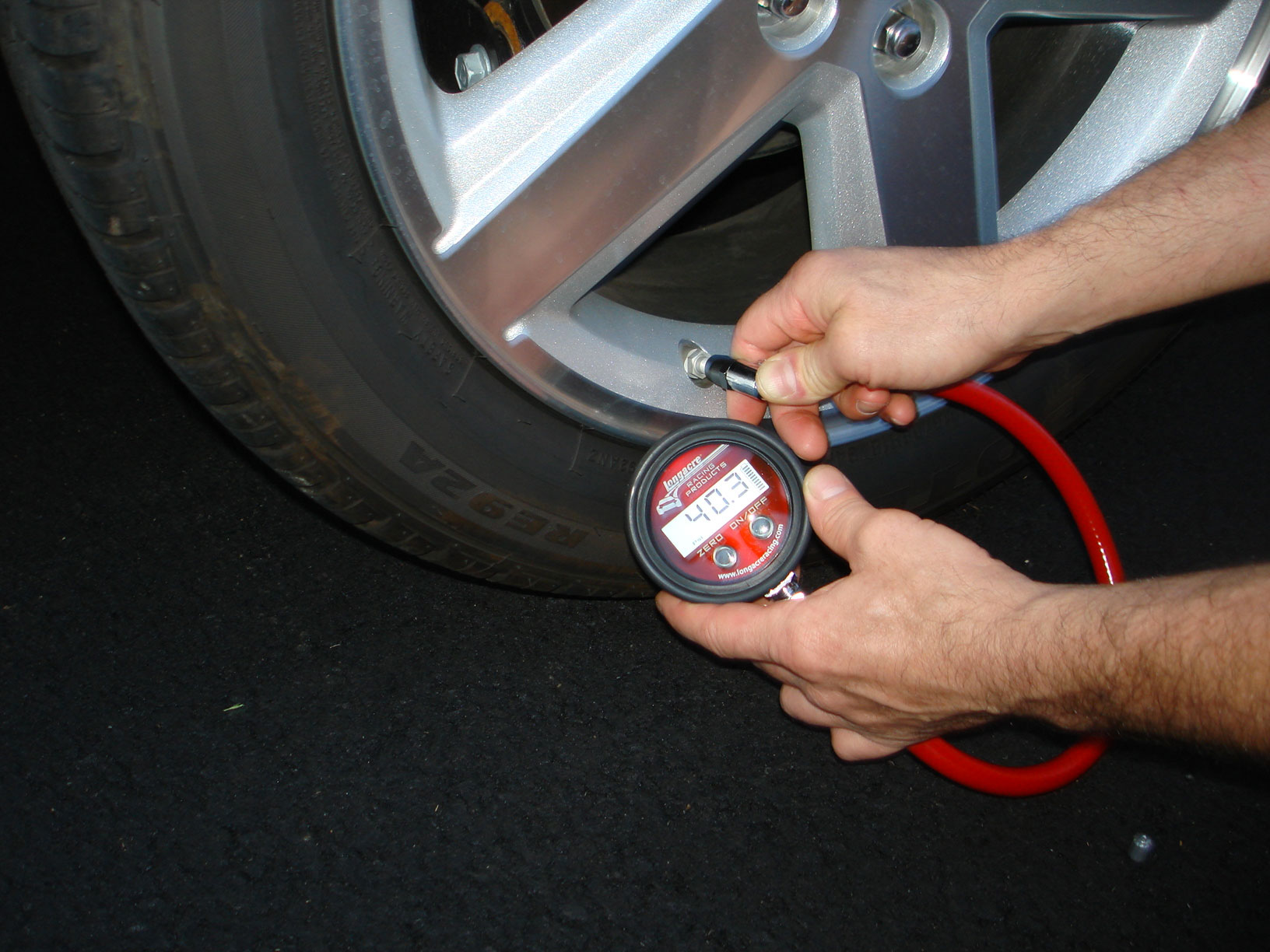Tire Pressure Tips
Make sure that you have the correct tire pressure in all five tires. (In case you never noticed, there’s a tire in the trunk.) There’s plenty of debate about what constitutes “correct” tire pressure, but we suggest going by what your vehicle manufacturer recommends, which should be listed on the side of the driver’s door, on the glove compartment door, or in the owner’s manual. Don’t confuse the “maximum tire pressure” listed on the sidewall of the tire with the “recommended tire pressure” provided by the manufacturer of the vehicle. While it’s okay to inflate your tires to the “maximum tire pressure” number, “Recommended tire pressure” is the ideal pressure you want in your tires. If you’re carrying an extra heavy load, follow the recommendation for “heavy loads,” which is usually listed in the manual that came with your mother-in-law. (Or your car’s owner manual.)

Ready for some more high-school physics? Remember that tire pressure will increase as the outside air temperature rises. In fact, tire pressure will go up approximately one pound for every 10 degrees Fahrenheit. So, tires that were at 35 PSI back in January when you drove to the slopes could easily be closing in on 45 pounds on a hot July day at the beach. Under some conditions that increase in pressure is enough to blow the tire! If nothing else, a tire that’s overinflated will wear prematurely and will cause the car to handle and brake poorly. Don’t count on your electronic tire pressure monitoring system to alert you to an overinflated tire, either — the warning light will only get illuminated when a tire’s air pressure is too low, not too high.
By the way, while you’re out there checking the air in those tires, toss that stupid pencil-style pressure gauge in the dumpster where it belongs and get an accurate, dial-type gauge.
You also have to remember friction. As you drive, there’s friction between the tires and the road. Friction means heat — and heat means an increase in tire pressure. So, here’s what to do about your car’s tire pressure: Check the tire pressure before you start driving. If the recommended pressure is 35 PSI, for example, it means 35 PSI before you start driving. If you check the tire pressure when you stop to get gas two hours later, it will be much higher than 35 PSI. If you check it at this point—after you’ve been driving–there is no way to know what the correct tire pressure should be. You’ll be tempted to let air out of the tires, because the tire pressure will be greater than 35 PSI. Do not do this, because the tires will be under inflated.
Call our Service Department today at 630-898-9630. Schedule your appointment online!
